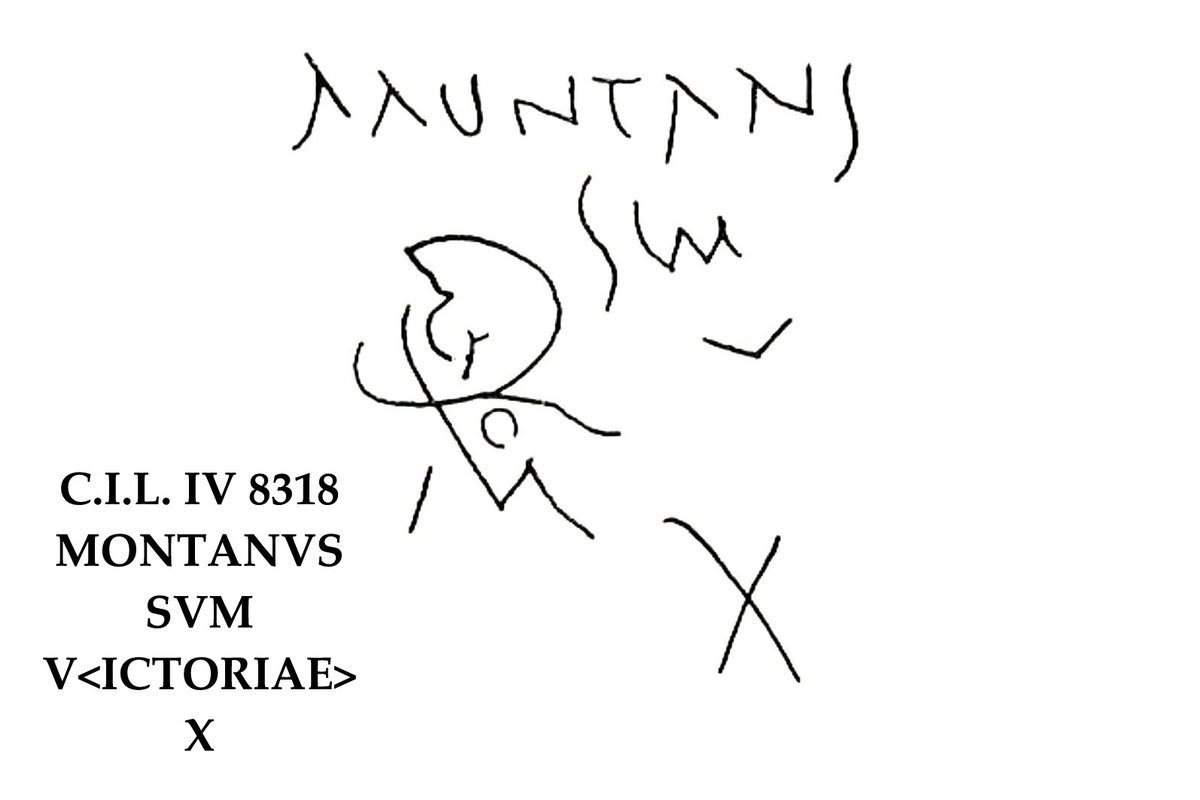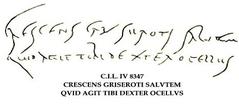
Casa del Menandro Visiting Hours, Tickets, and Guide to Pompeii Historical Sites
Date: 14/06/2025
Introduction
The Casa del Menandro is one of Pompeii’s most exquisite and best-preserved aristocratic residences, offering a vivid glimpse into the lives of the ancient Roman elite before the eruption of Mount Vesuvius in 79 AD. Spanning nearly 2,000 square meters, this grand domus is celebrated for its opulent layout, lavish frescoes, and the exceptional discovery of a Roman silver treasure. As one of the most visited sites within Pompeii, the Casa del Menandro embodies the wealth, artistry, and cultural sophistication of its time. This comprehensive guide provides historical context, practical visiting information, and tips for enriching your exploration of this iconic landmark.
Table of Contents
- Overview and Historical Significance
- The Eruption of 79 AD and Rediscovery
- Location and Architectural Layout
- Ownership and Social Context
- Artistic and Archaeological Highlights
- The Silver Treasure of Casa del Menandro
- Visiting Information: Hours, Tickets & Access
- Facilities, Accessibility, and Visitor Tips
- Guided Tours and Nearby Attractions
- Frequently Asked Questions (FAQ)
- Conclusion and Travel Recommendations
- References and Further Resources
Overview and Historical Significance
The Casa del Menandro stands as a testament to Pompeii’s grandeur. Named after a fresco of the Greek playwright Menander, the house reflects the intellectual and Hellenistic influences that permeated Roman elite culture. Its rediscovery in the 20th century revealed not only magnificent art and architecture but also a trove of silverware, now housed in the National Archaeological Museum of Naples. The residence’s scale, rich decoration, and strategic positioning in Regio I underscore its status as a symbol of affluence and sophistication (SeePompeii.com, pompei.it).
The Eruption of 79 AD and Rediscovery
In 79 AD, Mount Vesuvius unleashed a catastrophic eruption, burying Pompeii under meters of volcanic ash and preserving its buildings, art, and even inhabitants in remarkable detail. The Casa del Menandro remained hidden for nearly 1,700 years until systematic excavations brought it to light in 1928. The preservation of the site provides invaluable insights into Roman domestic life, social hierarchy, and artistic traditions (SeePompeii.com PDF).
Location and Architectural Layout
Situated in Regio I, Insula 10, Entrance 4, the Casa del Menandro occupies a prominent position within the southern quarter of Pompeii. The residence’s architecture represents the evolution of the Roman domus, featuring:
- Atrium: The main entrance leads to a grand atrium with a marble impluvium and frescoes depicting scenes from the Trojan War.
- Peristyle Garden: A colonnaded courtyard with vibrant wall paintings and a central garden, reflecting Hellenistic influences.
- Reception and Private Rooms: Includes a triclinium (dining room), cubicula (bedrooms), storerooms, and private baths.
- Bath Complex: The presence of a full private bath suite—rare for a private home—underscores the opulence of the property (PlanetPompeii.com).
The house’s layout, scale, and decorative program distinguish it as a model of elite Roman domestic architecture (Pompeii in Pictures).
Ownership and Social Context
Although the house takes its name from the Menander fresco, evidence suggests that Quintus Poppaeus, a member of the influential Poppaeus family, was its owner. The discovery of a bronze seal with his name supports this attribution. The Poppaei were among Pompeii’s most prominent families, possibly connected to Poppaea Sabina, wife of Emperor Nero, further highlighting the residence’s elite status (SeePompeii.com, PlanetPompeii.com).
Artistic and Archaeological Highlights
Wall Paintings and Frescoes
The Casa del Menandro is adorned with exceptional Fourth Style frescoes, including:
- Menander Fresco: Depicts the renowned Greek playwright, symbolizing the owner’s intellectual aspirations.
- Trojan War Cycle: Atrium frescoes narrate dramatic episodes such as the death of Laocoön and the abduction of Cassandra.
- Mythological and Theatrical Themes: Scenes of Diana and Actaeon, Venus and cherubs, Perseus and Andromeda, and Dionysian revelry.
- Lararium (Household Shrine): Features painted columns, garden scenes, and ancestor busts, underscoring domestic religious customs.
(Pompeii in Pictures, pompei.it)
Mosaics and Stucco Decoration
- Mosaic Floors: Geometric patterns, figural emblema (such as satyrs and pygmies), and marine-themed mosaics in the bath suite.
- Stucco Reliefs: Elaborate stucco work on vaulted ceilings and alcoves, adding depth and texture to the interiors.
Social Hierarchy and Daily Life
The house’s layout included quarters for servants, storerooms, and stables, reflecting the complexity of Roman domestic life. The discovery of twelve plaster casts in the living room—likely treasure-seekers caught by the eruption—provides a poignant human dimension to the site (PlanetPompeii.com).
The Silver Treasure of Casa del Menandro
A defining archaeological discovery at Casa del Menandro is the silver treasure unearthed in 1930. Excavations in the cellar revealed a wooden chest containing 118 pieces of Roman silverware, along with gold jewelry and coins. This hoard is among the most significant finds of Roman silver, offering insights into luxury and craftsmanship (Bryn Mawr Classical Review, Pompeii in Pictures).
Key highlights:
- Canthari (two-handled cups) with mythological motifs (Venus, Mars).
- Wine test tubes, platters, bowls, and jugs with intricate repoussé decoration.
- Gold jewelry and coins, including denarii and aurei from the Neronian or Vespasianic periods.
The treasure is now housed at the National Archaeological Museum of Naples (Museo Archeologico Nazionale di Napoli).
Visiting Information: Hours, Tickets & Access
Casa del Menandro Visiting Hours (2025)
- Summer (Apr 1 – Oct 31): 9:00 am – 7:00 pm (last entry 5:30 pm). Casa del Menandro may close after 6:00 pm.
- Winter (Nov 1 – Mar 31): 9:00 am – 5:00 pm (last entry 3:30 pm). Some houses close earlier.
- Closed: Christmas Day, New Year’s Day, and occasionally May Day.
- Check for updates/rotational closures: Access may be limited for conservation; consult the official Pompeii website for current information (Helen on Her Holidays).
Tickets and Entry
- Pricing: Approx. €18 for adults in 2025, with reductions for EU citizens aged 18–25, and free entry for under 18s.
- How to Buy: Purchase online via the official website or at park entrances. Online booking is strongly advised during peak periods.
- Entry Policy: Standard Pompeii tickets include Casa del Menandro when open. Re-entry is not permitted once you exit the park (Nomad Epicureans).
Facilities, Accessibility, and Visitor Tips
Location and Navigation
- Address: Regio I, Insula 10, Entrance 4, Pompeii Archaeological Park.
- Access: Easily reached from main entrances; well-signposted throughout the park. Free paper and digital maps available (Pompeii in Pictures).
Accessibility
- Terrain: Ancient paving stones and steps can be uneven. Sturdy footwear is essential.
- Mobility: Some accessible routes exist, but Casa del Menandro has limited wheelchair access. Consult the official accessibility guide for details.
On-site Facilities
- Restrooms: Located near the Forum and entrances.
- Food and Drink: Cafeteria behind the Forum; bringing snacks and water is advisable.
- Water Fountains: Available throughout the park—bring a refillable bottle.
Practical Tips
- Time: Allocate 30–45 minutes for a thorough visit.
- Bags: Large bags may be restricted. Travel light.
- Dress: Wear sun protection in summer; bring rain gear in winter.
- Photography: Non-flash photography is allowed; check local regulations for tripods.
Guided Tours and Nearby Attractions
- Guided Tours: Available in multiple languages, enhancing context and appreciation of the site. Many group tours include Casa del Menandro (Nomad Epicureans).
- Audio Guides: Recommended for self-guided visitors.
- Nearby Sites: Teatro Grande, Casa dei Vettii, Via dell’Abbondanza, and the House of the Golden Cupids are within easy walking distance.
For those interested in the Casa del Menandro silver treasure, the National Archaeological Museum of Naples is a must-visit.
Frequently Asked Questions (FAQ)
Q: What are the Casa del Menandro visiting hours?
A: Typically 9:00 am–7:00 pm in summer, 9:00 am–5:00 pm in winter. Check the official website for seasonal adjustments.
Q: Is Casa del Menandro included in the standard Pompeii ticket?
A: Yes, access is included when the house is open.
Q: Is the house wheelchair accessible?
A: Some areas have limited accessibility due to ancient paving and steps. See accessibility guides for details.
Q: Can I see the silver treasure on-site?
A: The original silverware is at the Naples Archaeological Museum. Replicas and interpretive materials are available at the Casa del Menandro.
Q: Are guided tours available?
A: Yes, both group and private tours are available; audio guides are also offered.
Conclusion and Travel Recommendations
Casa del Menandro is a highlight of Pompeii, blending artistry, architecture, and archaeological discovery. By planning your visit with attention to opening hours, ticketing, and practical tips, you can immerse yourself in the remarkable ambiance of this Roman home. Enhance your experience with a guided tour, and visit the National Archaeological Museum of Naples to see the original treasures.
Stay updated by checking the official Pompeii website, and consider using digital tools like audio guides and interactive maps. For exclusive content and guided tour options, download the Audiala app and follow our blog and social channels.
References and Further Resources
- SeePompeii.com - Casa del Menandro
- Pompeii in Pictures - Casa del Menandro
- Pompei.it - House of Menander
- Bryn Mawr Classical Review: The Menander Treasure
- Cultured Voyages Pompeii Guide
- Nomad Epicureans Pompeii Guide
- Helen on Her Holidays Pompeii Tips
- National Archaeological Museum of Naples
- Official Pompeii Archaeological Park
Images and further resources:


































































